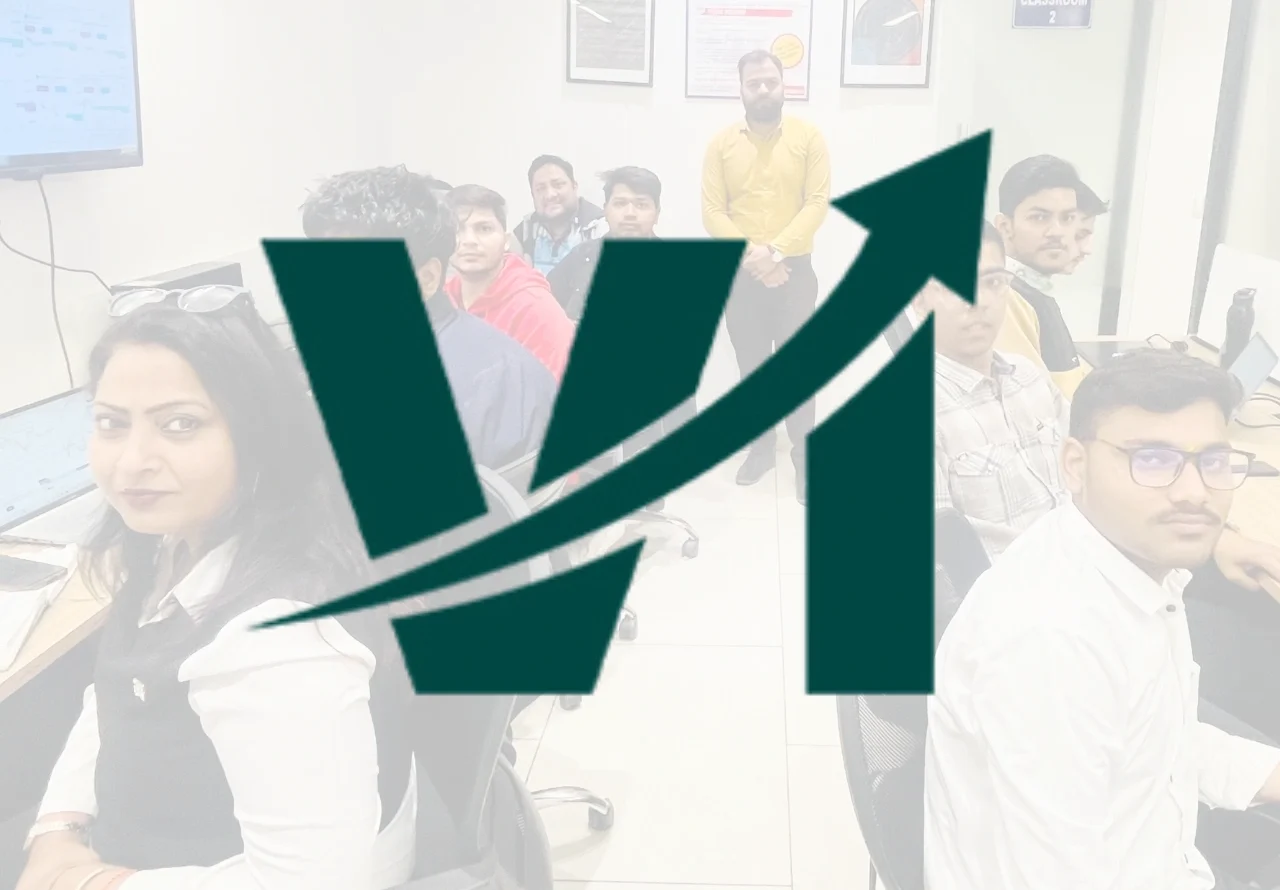About “Diploma in Stock Market Professional” a Seven-Month program specially designed for all students and professionals who wish to specialize in the stock market. This is one of its programs for all those who wish to do specialization in stock market trading (Equity, Equity Derivative, Currency & Commodity Market, Technical Analysis
Fundamental Analysis. This course covers Options Basic Strategies and Advanced Greeks. A Diploma in Financial and Stock Market is a 7-month job-oriented course. Join a rigorous program as we walk you through the study of legitimate theoretical financial markets. In 7 NSE modules, learn subject areas of financial market courses including essential aspects of the securities market. Besides, the Financial Market Course covers important topics, practices, and trends in the subject area. A financial market course is a valuable degree that requires entering a lucrative career in the securities market. Moreover, gain specialized practical training in operation and live trading from mentors. Live market training in key principles, policies, framework, and applications. Each skill drives competent knowledge and ultimately powerful
expertise. Become a master trader overnight!
What Will You Get After an Equity Market Trader?
Diploma in stock market Professional is the most sought program after 10+2. Accomplish the course in 7 months duration, divided into 7 NSE modules you will surely enjoy. The course focuses on study and operation of:
- NCFM Capital Market Module certification
- NISM Equity Derivative Market Module
- NCFM Commodity Market Module certification
- NISM Currency Derivative Market Module
- NCFM Technical Analysis Module certification
- NCFM Option Trading Strategies Module certification
- NCFM Fundamental Analysis Module certification
Eligibility
Participants seeking answers to the question ‘what is the eligibility to the financial market course?’ You can find simplified answers in this section. The basic eligibility required to pursue a diploma in financial market analysis courses is.
- Minimum eligibility 10/ 10+12 from recognized boards or institutions.
- Candidates having a background in Any Stream (Arts, Comm. & Science)
- Graduates who want to expand career horizons in the financial market
- Working professionals seeking exposure to securities market
- Investors and traders looking for formal education or employment
Admission Criteria
Any candidate can pursue a Diploma in Financial Market Analysis. Participants do not appear for an entrance exam. However, a registration fee of Rs. 1600/- (non-refundable). Learn more about admission prerequisites:
- Submit self – attested 10th,12th graduation. Including other professional degree certificates and mark sheets at the time of admission.
- Also, verification is done on the basis of original documents. Failing to which admission application is rejected.
- 95% attendance is a must during the program in each module opted by the student.
- Faculty and center head remarks /recommendation is considered during the final assessment
- Your certification depends on your Attendance, class assessment, projects, internal exams, NSE exams, Practical classes, Projects and Viva
- The decision of the Center in Charge and center Head will be final.
*Placement guarantee refers to (After getting NCFM and NISM Certification of all 10 modules covered in adv. diploma course)
Why Choose (Diploma in Financial Market Analysis) DFMA Course From VIDE?
- Students from 150+ countries infused from rich culture diversity
- Team of technical analyst and research analyst as 25+ years’ experience faculty Access to world-class trading lab to practice live market
- Opportunity to network with industry leaders during workshop training like SEBI, Reliance Capital
- Consistent online and offline NSE mock test for constructive feedback
- Diploma in Financial Market Analysis course fees are very affordable compared to other full-time courses.
- Hands-on learning with more than 25+ trading software
Job Opportunities and Prospects
DSMP is a highly job-oriented course providing opportunities on the stock Exchange. A career in the financial and stock market offers immense growth as an increase in skill demand in the upcoming sector. Job opportunities after financial market course beings right after completing the program. After completing the course, you can apply in organizations like
- Financial institutions as financial advisor
- Investment bank as a relationship manager or stock analyst
- Stock broking as broker or sub broker
- Hedge funds as a fund manager, equity trader, research analyst
- Mutual funds as a wealth manager, customer acquisition, and portfolio manager
- KPOs as research analyst, equity research, or share market trader
- Depositories as investment management and operations managers
- Facility company as asset management
NSE – Certifications
- 2 CERTIFICATES OF NISM MODULES
- 5 CERTIFICATES OF NCFM MODULES
- VIDE – DIPLOMA IN STOCK MARKET PROFESSIONAL (DSMP)
*NCFM and NISM Certificates are subjected to appearance for the exam at the NSE Center. You get 100% preparation at the branch.
DETAILED CURRICULUM
- Basic knowledge of capital market (Primary Market & secondary Market)
- Major Market Participants
- Major exchanges and indices
- Legal Framework and regulations
- Trading and Trading Membership
- Clearing and Settlement Process
- Fundamental Valuation concepts Glimpse of various trading software (ODIN, NEAT, NOW)
- Practical training of market operations
- Live Practical Sessions
- Introduction to Derivatives, Type of derivative contracts
- Understanding of future, forward, option and SWAP
- Future contracts, Mechanism & pricing of Forward contracts
- Understanding of Options and it’s (call & put)
- Trading, Clearing, and Settlement, Risk Management in Derivatives
- Regulatory Frame Work
- Accounting of Derivatives
- Live Practical Sessions
- Understanding Commodity Market
- International commodity Vs Domestic Commodity
- Currency Derivative and its History
- Global & Domestic Research (Events)
- Forward, Future and Options of currency derivative
- Trading, clearing, settlement & Risk Management of currency futures
- Different Strategy Use for Currency Derivative Trading
Advance Practical in Technical Analysis
What is technical analysis? The basis of technical analysis Difference between technical vs fundamental analysis
- Line chart
- Bar chart
- Candlestick chart
- Kagi chart
- Point & Figure chart
- Renko chart
- Three Line Break chart
The various types of price charts
Candlestick study
What is the purpose of drawing trend lines? How to plot trend lines
- Doji
- Hammer / Hanging Man
- Inverted Hammer / Shooting Star
- Spinning Top
- Marubozu
- Bullish /Bearish Engulf
- Bullish /Bearish Harami
- Piercing pattern /Dark cloud cover
- Tweezer Top & Bottom
- Morning star /Evening star
- Three white shoulders / Three black crows
- Abandoned body (Bullish & Bearish)
- Tasuki Gap (Bullish & Bearish)
Rising three methods & falling three methods
What is Support? What is Resistance? Change of support to resistance and vice versa
Four stages:
- Accumulation
- Markup
- Distribution
- Panic liquidation
Chart patterns:
- Head & Shoulders
- Inverse Head & Shoulders
- Double Top & Bottom
- Triple Top & Bottom
- Flags & Pennants
- Triangles (Ascending, Descending, Symmetrical)
- Wedge Patterns
- Rounding top/bottom
- Cup & Handle
- Rectangles Bullish / Bearish
- Triple top/bottom
Types of Gaps:
- Common gap
- Breakaway gap
- Runaway gap
- Exhaustion gap
- Island cluster
What does a technical indicator offer? Why use indicators?
- Leading indicator
- Lagging indicator
- Simple moving average
- Exponential moving average
- How to trade on moving averages?
- What is the MACD and how is it calculated?
- How to trade on MACD?
- What is momentum?
- Calculation of the RSI
- Divergence
- How to trade on RSI?
- Overview
- Calculation of On Balance Volume
- How to trade on On Balance Volume
- Overview
- Construction
- How to trade on On stochastic
- Overview
- Signals
- William %R
- Few rules for beginners
- How to trade on bollinger bands
- How to use multiple indicator
- How to trade on Fibonacci retracement
- How to trade on Fibonacci extension
- Pyshological Trading
- Risk Management
- Overview
- How to trade on Money Flow Index
- Background
- Principal rule of the Dow Theory
The Dow Theory
- Elliot wave basics
- How to trade on Elliot waves
- # GTS – Growth Trading Strategies – On Intraday & Positional Trade Include Live Technical Analysis Trading Strategies.
- Option Terminology
- Options Payoffs
- Payoff profile of buyer of asset: Long asset
- Payoff profile for the seller of asset: Short asset
- Payoff profile for buyers of call options: Long call
- Payoff profile for the writer (seller) of call options: Short call
- Payoff profile for buyers of put options: Long put
INTRODUCTION TO OPTIONS
- Long Call
- Short Call
- Synthetic Long Call
- Long Put
- Short Put
- Covered Call
- Long Combo
- Protective Call
- Covered Put
- Hedging
- Long Straddle
- Short Straddle
- Long Strangle
- Short Strangle
- Collar
- Bull Call Spread Strategy
- Bull Put Spread Strategy
- Bear Call Spread Strategy
- Bear Put Spread Strategy
- Long Call Butterfly
- Short Call Butterfly
- Long Call Condor
- Short Call Condor
- Option Chain Analysis
- Greeks
- Beta
- Theeta
- Gamma
- Delta
- what is Fundamental & Technical Analysis?
- Difference between technical & fundamental analysis
- Features & benefits of Fundamental analysis
- Economic Analysis
- Industry Analysis
- Company analysis
- GLOBAL & DOMESTIC RESEARCH (EVENTS)
- Political events (Election Results)
- Central Bank Meet (Central Bank events)
- Government Budget
- Monsoon
- OPEC Meeting
- War or Terrorist Attack
1.) Introduction of Fundamental Analysis
2.) Top-Down Approach in Fundamental Analysis
3.) Economic Analysis
- Rating agencies
- India VIX
- Scandal
- Insider Activity
- Country Debt
- Inventory
- Retail Sales
- Consumer Confidence
- CPI – Consumer Price Index
- PPI – Producer Price Index
- Core Durable Goods Order
- New Homes Sales
- Building Permits
- ADP Non-Farm employment
- Non-Farm Employment
- Unemployment Claims
- PMI
- Industrial Production
- GDP Gross Domestic Production
- Trade Balance
- Crude Oil Inventory
SECTOR ANALYSIS (SECTOR SELECTION)
- Oil & Gas Sector
- Aviation Sector
- Paint Sector
- T. Sector
- Metal Sector
- Pharma& FMCG Sector
- Jems&Jewelry Sector
- Banking Sector
- Automobile Sector
- Real Estate Sector
- Telecom Sector
- Power Sector
- Share or Commodity Selection
- Cash Flow
- EPS
- P/E
- Book Value
- Price to Book Value
- EBITDA
- Profit Ratios
- Profit Ratios
- Dividend
- Market Cap
- DEBT
- Management
- Promoters Holding
- Volume
- Open Interest
- Beta
- Moving Average
Inclusive With Mastering Fundamental Analysis Strategies (MFA) –
This Strategy is based on Market & Data Analysis.
Who Should Do Diploma in & Financial Market Analysis Course?
- MBA & BBA/CA/CS/CPT Students
- Anyone who wants the job
- 10+2, BA. B.com. B.Sc. Pursuing Students
- Those who want to pursue the career in financial services
Career Opportunity
After completing Diploma in Financial Market Analysis Course certification course one can pursue his/her career in Indian and International broking houses, Banks, Asset Management Company, Hedge funds, PE funds, NBFC, KPO’s and credit rating Agency on various positions and in different departments.
You can become Equity Analyst, Stock Analyst, Research Analyst, ABM, Branch Manager and you become fit for various other posts in various other verticals depending on your overall Qualifications
Admission Criteria and Eligibility:
The candidate should Minimum 12th (Senior Secondary) pass from any reorganization Board/institutions. We always recommend the candidate should pass at least a bachelor’s degree so that it will be a bit easier to provide placements.
Graduate students get job placement on the direct payroll in big companies, and 12th students will get placement in small companies or in sub-brokers’ offices.
*Placement guarantee refers to (After getting NCFM and NISM Certification of all 10 modules covered in adv. diploma course).
All original documents-10th,12th graduation, other professional degree certification and mark sheets must be submitted as a self-attested copy/copies at the branch at the time of admission and originals must be shown to the center In Charge, failing
which admission may be cancelled.95% attendance is a must during the program in each module opted by the student.
Remarks /Recommendation of faculty and center Head will be taken in the record after each class.Your certification depends on your Attendance, class assesment, projects, internal exams, NSE exams, Practical classes, Projects and Viva.The decision of the Center in Charge and center Head will be final.




